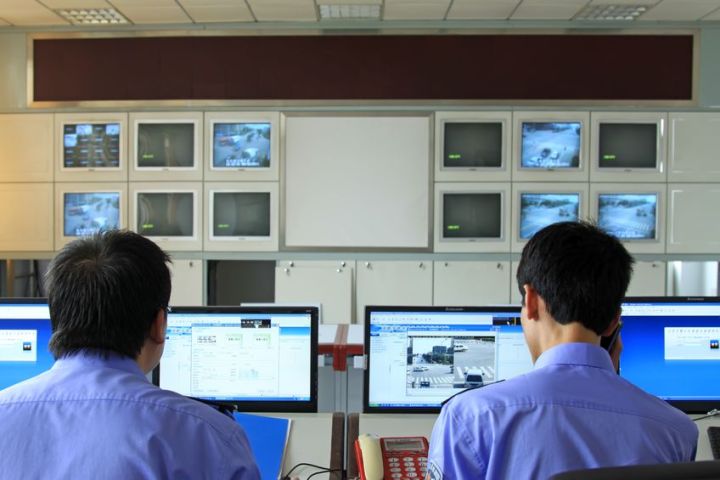
Hartford’s tech center has a wall of high-resolution flat screens with live video feeds from the streets, as well as license plate scanning and automatic gunshot detection systems. There’s no facial recognition installed yet, but officials said it could be added. According to Sgt. Johnmichael O’Hare, the head of the Hartford center, in the few months it has been open the technology has already assisted in hundreds of criminal cases that resulted in arrests. Speaking of the help the center gives Hartford’s police officers, O’Hare says, “It’s huge. It provides them real-time intelligence.”
The first big city police tech center was New York City’s Real Time Crime Center, which opened in 2005. While other large cities came next, small cities didn’t have the resources. But now that’s changing, thanks to federal funding and money from drug bust forfeitures. In addition to Hartford, tech centers have recently been set up in police departments in nearby Springfield, Massachusetts and in Wilmington, Delaware. New centers are also in in planning for Bridgeport, Connecticut, Modesto, California, and Wilmington, North Carolina.
The centers work not unlike the way you see on TV. Personnel in the centers can often track suspects on the street and relay information, including from live video feeds, directly to officers’ cellphones. Agreements are in place to tap into public and private surveillance camera systems to respond to active situations.
The proliferation of surveillance equipment has some concerned. When facial recognition software is used with such systems, the American Civil Liberties Union and other groups raise questions about possible detection errors and the potential for invasion of privacy. Similar concerns are raised about authorities monitoring social media accounts. Additional questions are raised about storage of surveillance footage.
Technology isn’t going away and government agencies large and small will continue to adopt it to help with information transfer in furtherance of their jobs. For some it may be reassuring that small city police departments are acquiring better technology, closer to if not as advanced as what is shown being used on TV.


